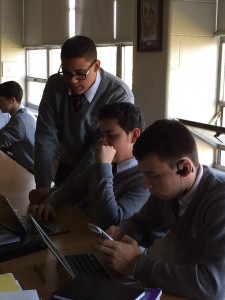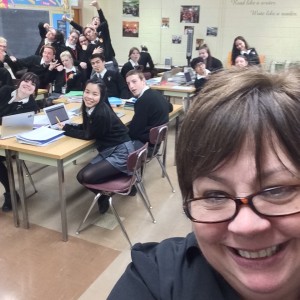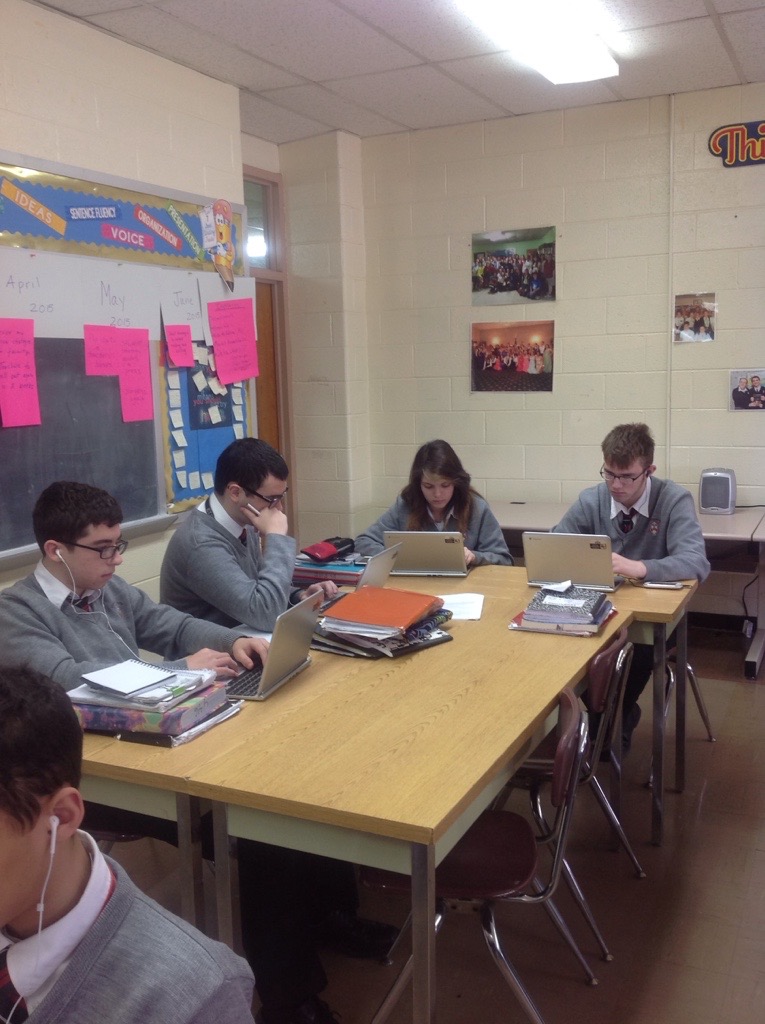I love writing. I love teaching about writing. I love helping students learn more about writing.
I even love talking about teaching writing.
Coaching students to develop as more confident and more successful writers is a passion for me. Naturally, when I hear anything about writing I pay sharp attention.
Recently, my colleagues have begun to talk about what writing looks like in their classrooms. We have met and will continue to meet in small learning communities to discuss what kinds of writing our students do, what skills they need, and what path can we take to make sure they are well prepared for college and career.
We have talked about writing modes–descriptive, narrative, informative (I still like expository), and argument. We have talked about patterns of organization–compare/contrast, process analysis, classification and division and so on. We have discussed usage errors and student resistance to revise their works. We are even talking about the difference between writing to learn and learning to write. We have started to talk about many of my favorite things.
However, we have not talked about the other kind of writing yet. We have not talked about the kind of writing that cements a student’s learning.
This past week, I had an amazing experience with my students in reflective and metacognitive writing.
For years, even before I ever learned about the importance of metacognition, I routinely asked students to take the time to write about what they learned, how they felt while learning it, and what about the learning was important. Oftentimes, I assigned this at the end of a marking period or as a portfolio reflection.
This time I asked the Digital Literacy Skills students to reflect on their work from the first quarter. But I did this a little bit differently than I usually did. Frequently, in Digital Literacy or in Writing Skills, I assign the students a reflection activity. I give them a list of the modes, skills, and strategies that we worked on and ask them to write about their most successful and least successful experiences. And they always amazed me with their honesty.
This time around, I changed it up a little. First of all, I did not give them a list of what we did. I simply told them to scroll through Google Classroom from the bottom up and review all the work they completed so far. Then I asked them to consider these questions:
- What have I learned?
- What was my favorite lesson?
- What work am I most proud of?
- What could I have worked harder on?
- How am I working in a group? Am I an asset to helping my peers or am I a distraction?
- What have I learned about my ability to manage my time in class?
- What is my work ethic like?
- Do I work slower than most? Faster than most?
- Do I bring my best effort to this class?
- How important are the lessons in this class?
- How do these lessons apply to school work?
- How do these lessons apply to my life?
- What would I like to learn?
I did not think long and hard about these questions. I wrote them quickly, reacting likely to some of my students’ problems with working in a group. I also know that I was annoyed by the report of a student who thought that this course was a filler. That probably rattled me more than anything. Certainly, no teacher wants their students to think that a course does not m atter, but that challenge might actually have opened my eyes to what I need to offer for my students more regularly–the chance to stop, reflect, write, self assess, and consider the relevance of their learning.
atter, but that challenge might actually have opened my eyes to what I need to offer for my students more regularly–the chance to stop, reflect, write, self assess, and consider the relevance of their learning.
When I started to read their responses, I expected them to talk about how much they like Genius Hour and how they like working on computers each day. And many of them did write that. But so many students really seem to be thinking about their future selves and about “soft skills,” and that was amazing to read.
One of my students did not even mention technology initially, concentrating on other aspects of the class. He wrote, “So far in digital literacy I have learned many things including how to work in a group, how to cooperate with others, also how to make presentations and speak in front of people and feel comfortable.”
Many of them were honest about their effort. “I do bring my best efforts to class because I want to learn and help others with the knowledge I have,” wrote one student.
They were honest about their work ethic. “For example, my laziness for things that I have to get done on my own is a very big weakness of mine that I hope to improve on in the future.”
Another wrote, “My work ethic is excellent and I always show up.” I love the way he worded that.
Realizing the side effect of working hard in class, this young man wrote, “I have learned that while I am doing my work my time management can be better, and that time flies when you are getting things done.”
“I have learned that I manage time at my own pace so I don’t get too over loaded with work frequently,” wrote another student. That is a skill that is certainly valuable for his future.
Some of the students are overcoming personal struggles. “Seeing their reaction to the presentation made me very happy. I was scared that they would make rude comments and say stuff about it, but it was the complete opposite of what I thought would happen,” wrote one student.
Another wrote about stretching herself. “After finishing this quarter, I have come to realize my true potential. I have learned different tools and techniques where I can display my thoughts. Also, I’ve learned different presentation tools that are a step out of my comfort zone where I can present my thought in a more unique way”
“Also, I had never used any of the tools that we used for Process Analysis. It was kind of a shock to me and it was harder than I was expecting. That’s good, though. It’s good because I’m a sophomore in High School. I’d rather have a difficult time now than later. It is much better to get the process down now and be experienced in college than to try to learn on the fly,” wrote another.
In addition to their honest self assessment, there were even a few comments that made me feel good.
A student wrote, “I like how this class is different, I never know what to expect. I’ve accomplished things I haven’t before.”
Another wrote,”This is my favorite class so it is easier for me to do well and learn things.” Wow. He understands the human aspect of teaching.
But the sweetest bit of all was from this student: “It is no doubt my favorite class to come to just because the class seems so nice.”
The writing modes they work in, the presentation tools they explore, the content that they learn–none of this is as important as the other things they are learning: working to the best of their ability, working well with others, managing their time wisely, taking risks, and feeling comfortable with themselves.
Without that reflective piece, I may never have realized that this “other kind of writing” was the one that brought me the most joy and fulfillment in realizing that what I am really teaching is not writing, and it is not writing with technology. What I am facilitating is the development of skills for lifelong learning and success.
What an honor.

 hat is fostered by Google. There, employees are expected to spend 20% of their work time creating new programs or devising new applications. Of course, Google has everything to gain from this because whatever is created becomes a Google product. The question is, what do we as teachers have to gain?
hat is fostered by Google. There, employees are expected to spend 20% of their work time creating new programs or devising new applications. Of course, Google has everything to gain from this because whatever is created becomes a Google product. The question is, what do we as teachers have to gain?